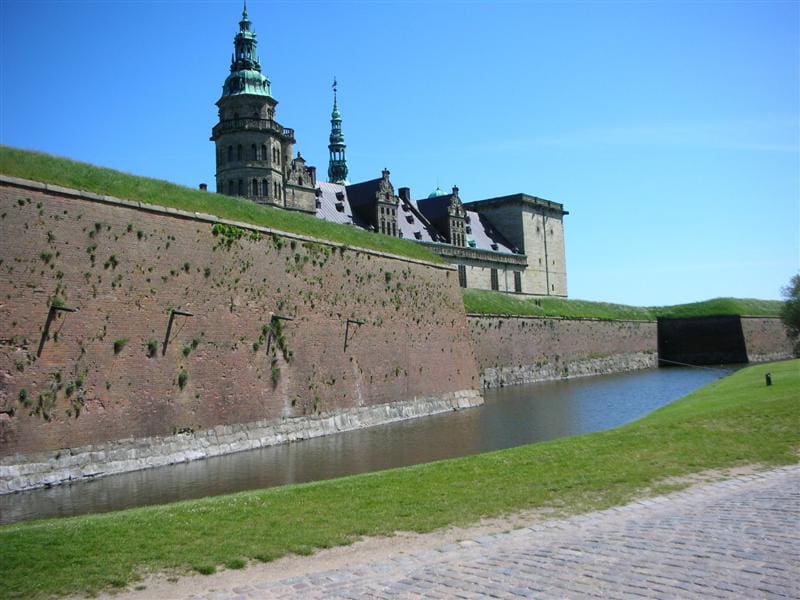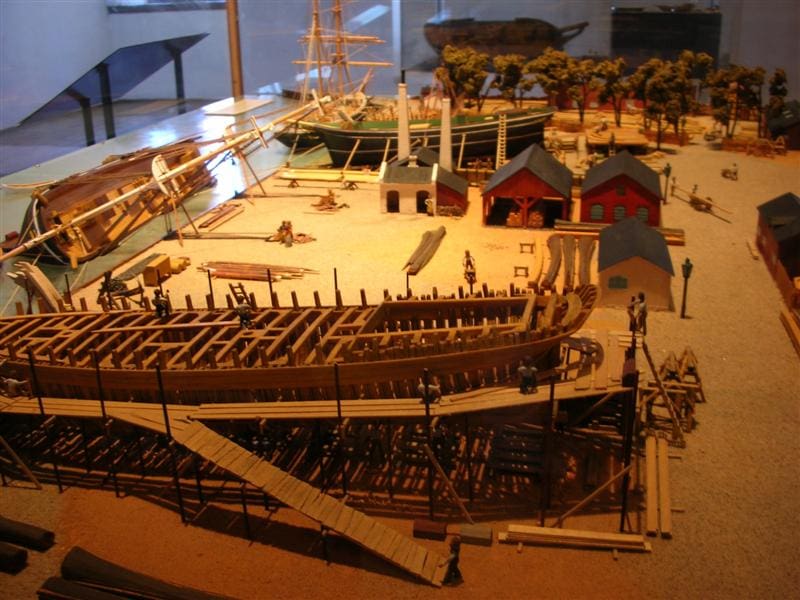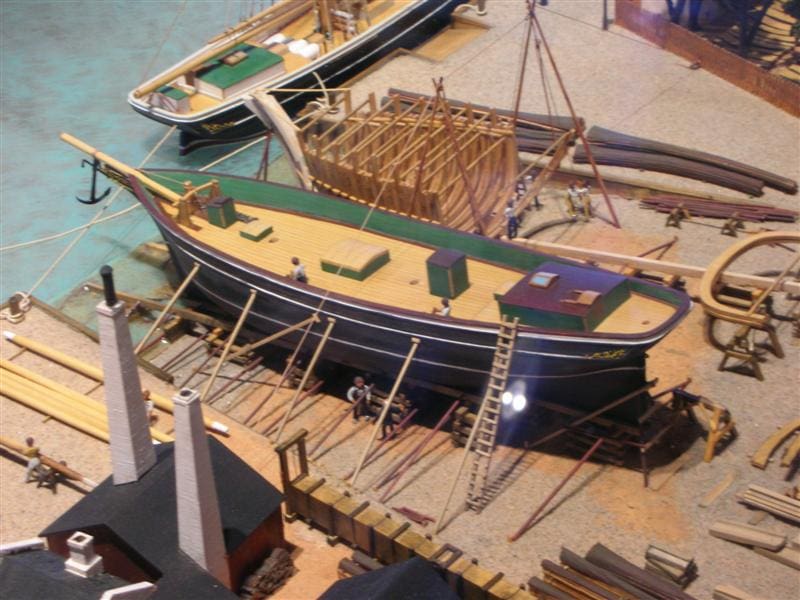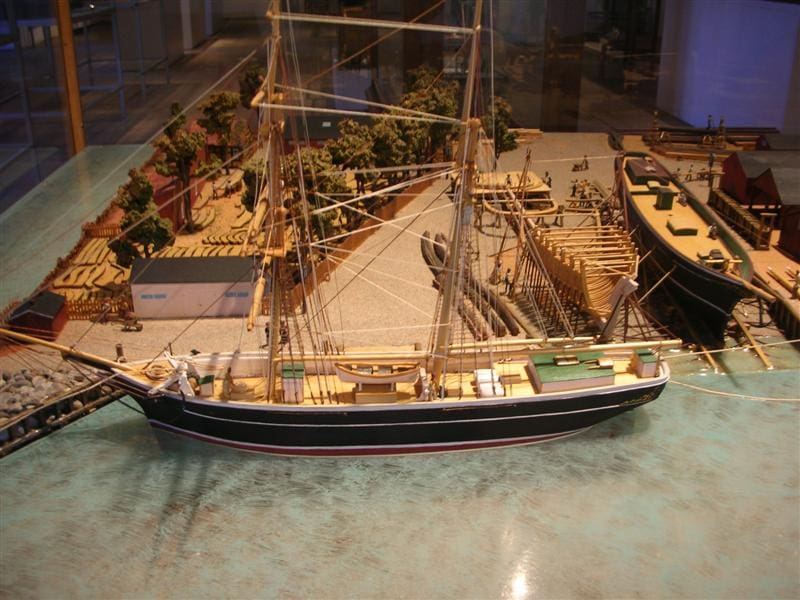Some of us may believe we make realistic models, but when I saw this dockyard diorama in Denmark, I could not believe how it could possibly have been made by human hands, because it was so finely detailed. Was this Hamlet’s Dockyard?





Elsinore Castle conjures up a misty mysterious medieval stronghold that Shakespeare would have you believe was the fortress of Hamlet, King of Denmark. Now look at Photo 1, was this Hamlet’s Castle? It is generally considered that this vast fortress, the Kronborg Castle at Helsingor was the Elsinore in the play ‘Hamlet’, written in 1601. Its position was strategically important as all shipping to the seven states bordering the Baltic Sea has to pass through the Oresund Channel between Denmark and Sweden which is only 4000 metres wide at Helsingor. Under the protection of the castle walls there is a harbour and the remains of an extensive dockyard area. Today the great castle is a furnished palace museum, with a separate maritime museum within it. It is possible that a few readers of MB might visit the area, so I took some photos of the diorama model dockyard in the marine part of the museum to give you some idea of its incredible realism. The photos are taken through glass without flash, so please excuse any blurring or colour cast.
Let’s take a walk around the dockyard. Here in Photo 2 we have the skeletal framing of a ship. You may think it is about 30in. long? Wrong, it is actually only 8in. in length. I recall Donald McNarry in Model Shipwright saying that one way to construct such a model was to make a sandwich of perhaps 100 slices of wood (as would be needed in this model) compressed together like books squeezed together between bookends, to effectively make a solid block the size of the model, such that all the pieces can be separated later. Whilst these were held together, he carefully carved the hull externally and internally. Then, releasing all the pieces and discarding every alternate one that was not needed and reassembling those remaining on a keel, he finished up with a beautifully framed hull. Sounds easy? Back in the photograph, the workers on the ship and on the scaffolding are less than 1/2 inch tall. Beyond you can see a decked ship, Photo 3. Note a further ship early in the framing stage. In Photo 4 you can see men on pontoons attending to the bottom of a ship that has been careened over on its port side. And now in Photo 5, is the completed brigantine getting ready for its maiden voyage. Unbelievable that such a ship was launched in 1601!
Enjoy more Model Boats Magazine reading in the monthly magazine.
Click here to subscribe & save.
At least you can now say you have visited the castle dockyard. Shakespeare only went to Elsinore in his vivid imagination.




